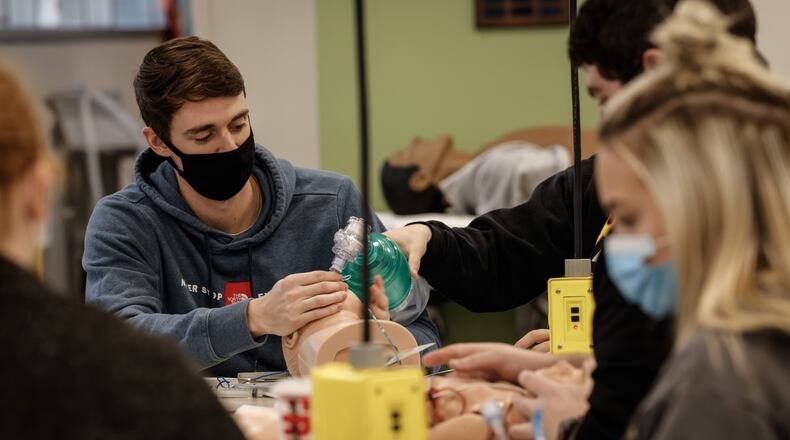Edison State Community College waived any tuition costs remaining after an eligible student’s financial aid had been applied. Eligible students all enrolled in Edison State right out of high school.
Other incentives included:
- Sinclair Community College used federal funds to offer more than $23.7 million in grants to students, which the students could use for food, housing, school materials, technology, health care and child care.
- Wright State also used federal fund to offer more than $30 million in aid to studentsin 2020 and 2021.
- A total of 555 students attending Wright State in fall 2021 received the Presidential Welcome Scholarship of $1,000 for the academic year. This was need based aid.
- WSU awarded 33 graduating high school seniors set to attend fall 2021 a Jump Start award on their education by taking a free class during the summer.
The institutions all say the programs helped students get into and stay in college.
Jeff Robinson, a spokesman for the Ohio Department of Higher Education, said the federal government gave many schools Higher Education Emergency Relief funds, for which they could devise their own spending plans.
About half of the funds received were used for student benefit, Robinson said, including creating scholarships, providing debt relief and other situations.
He noted that schools around the country, not just in Ohio, provided debt relief for students, including one school in Texas that forgave some of its students’ debt.
Edison State spokesman Bruce McKenzie said the additional incentives helped students in Preble, Darke, Miami and Shelby counties attend college out of high school. He noted that nearly 6% more high school seniors in the area had attended college right out of high school.
“Students saw the value provided by the tuition waiver program in that they were able to stay close to home and attend a high-quality institution of higher education at a minimal cost,” McKenzie said.
McKenzie said Edison State also exceeded expectations, giving the college a 9% increase in headcount and an 11% increase in credit hours between fall 2020 semester and fall 2021.
He noted the waiver came from Edison State’s own funds and was paid for because more students were able to attend the college. The program wasn’t paid for by federal COVID-19 dollars, he said.
Sinclair also offered incentives to high school students to attend college right out of high school, specifically to 24 Dayton Public School students with at least a 2.0 GPA and at least 90% attendance throughout their senior year.
Each student is eligible to receive up to $1,000 that will be split between fall 2021 term and spring 2022 term, said Cathy Petersen, a spokesperson for Sinclair.
In addition, Sinclair expanded its childcare program after receiving feedback from students about their difficulties in finding childcare, made possible through a recent grant from the U.S. Department of Education, Petersen said.
About the Author

